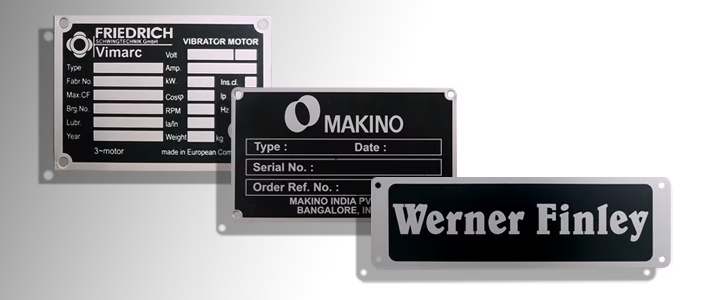
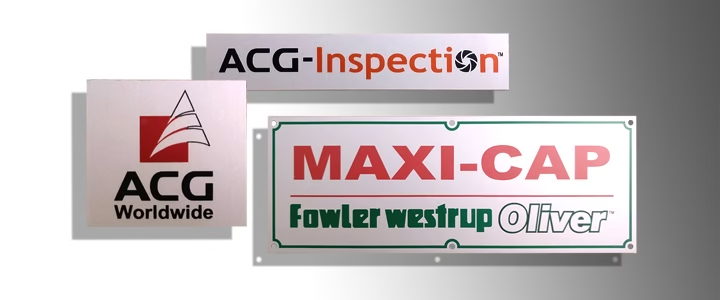
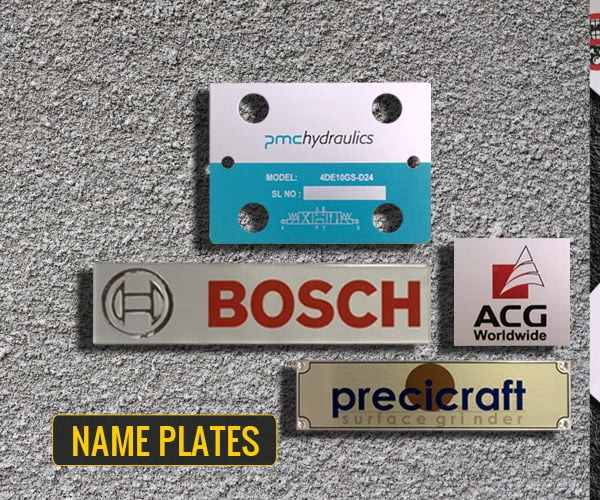
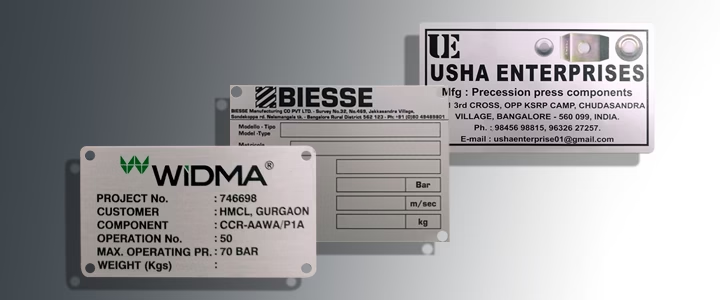
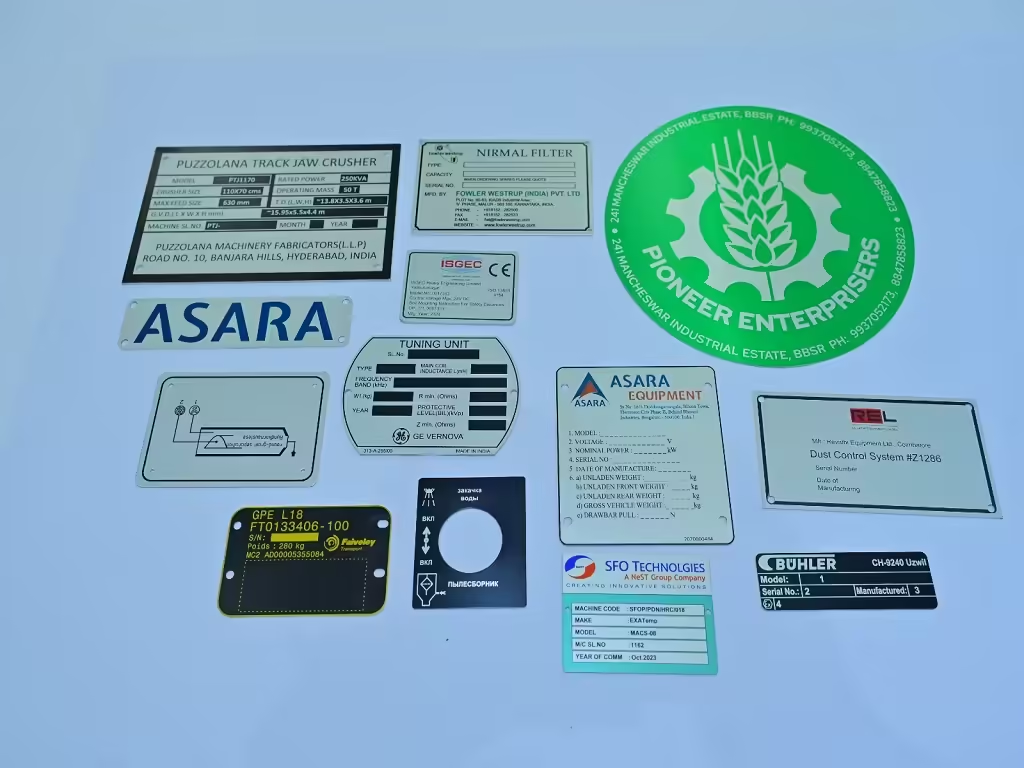
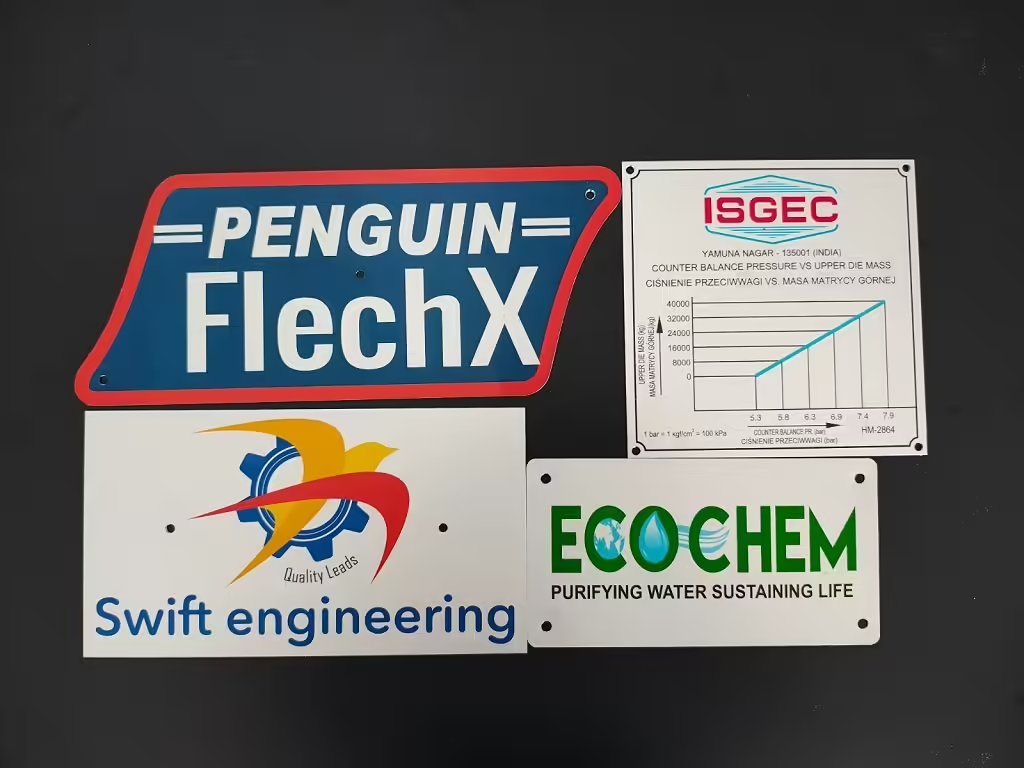
Aluminium nameplate thickness
The thickness of Aluminium nameplates is important, the required thickness of nameplates varies from one industry to another industry, and the perfect size of aluminium nameplates fits different kinds of machines. So it’s very important to choose the right thickness for a desired application, and the common measurements used. No matter what type of machines you have, we manufacture customized nameplates as per your requirements and size:
How to know the size and thickness of your aluminium nameplates
Aluminium nameplate thickness is the critical size parameter that affects its strength, reliability durability as well as how it works and performs.
A thicker Aluminium nameplate normally has more strength and rigidity and is much stronger, thus helping in long-lasting performance. On the other hand, the thinner aluminium nameplates shall be cheaper and much lighter but fit for some machinery that requires lightweight aluminium nameplates
The thickness of the aluminium nameplate plays a key role in finding the product that suits individual applications, the thickness of the aluminium nameplates are identification plates could be for the industrial machines nameplates or the outdoor signage nameplates which need to match the requirements of the usage.
Aluminium name plate thickness matters, businesses and individuals will be able to choose as per their requirements rather than a random one when purchasing nameplates for their product, nameplates that are durable and compare for the better price
The different thickness of Aluminium nameplates are as below
- 0.5 mm (0.02 inches):at Kinelectro Lines the basic and first thickness of thinner aluminium name place starts from 0.5mm (0.02 inches) you can choose the 0.5 mm thickness aluminium sheets the thinner size sheets are normally used for indoor machinery and for small machinery and products. Thin, flexible aluminium nameplates, are often used for indoor applications or adhesive-backed labels.
- 1 mm (0.04 inches):This is slightly larger than 0.5mm, this gives added strength against bending or warping. Used in many industries as per custom design and requirements. Medium-thickness plates offer more durability while still being lightweight.
- 1.5 mm (0.06 inches):The 1.5 mm thickness aluminium nameplate is an intermediate thickness that makes it durable and much stronger than a 1 mm thickness nameplate also used in different Industries it is also flexible to suit both indoors and outdoors. Common for industrial and outdoor applications, providing better resistance to wear and tear.
- 2 mm (0.08 inches):The aluminium nameplate grade 2 mm gives better strength and torsion control for heavy industrial machinery used for long durable life in different kinds of industries this grade 2 mm thickness nameplates are in great demand and most of industry chose this grade.
- 2.5 mm (0.10 inches):Heavy-duty nameplates used for machinery, signage, and harsh environments.
- 3 mm (.12 inches):These 3 mm thickness nameplates are much stronger and harder than the 2mm and 2.5mm thickness name plates mainly used for outdoor nameplate boards and strong machinery to withstand harsh weather conditions
- 5 mm (0.20 inches)5 mm thickness aluminium nameplates the thicker size aluminium nameplates available with us, which can be customized to any shape anodized, and printed as per your required color and designs, Rare but used for highly durable plaques, branding plates, or architectural applications.
To determine the thickness of an aluminium nameplate, you can use the following methods:
- Vernier Calliper (Most Accurate)
- Use a digital or analogy vernier calliper to measure the thickness directly.
- Place the calliper jaws on the edges of the nameplate and read the measurement.
- Micrometre (High Precision)
- A micrometre screw gauge provides even more precise measurements, especially for very thin plates.
- Thickness Gauge (For Coated Plates)
- If the nameplate has coatings or engravings, a non-destructive thickness gauge (ultrasonic or electromagnetic) can measure the metal’s actual thickness.
- Manufacturer Specifications
- If you ordered the nameplate from a supplier, check the product specifications or ask the manufacturer.
- Comparison with Known Thickness
- Compare it with a standard aluminium sheet of known thickness if you don’t have measuring tools.
